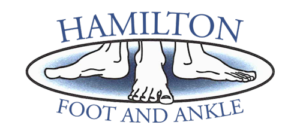Heel Pain
 Heel pain is a common childhood complaint. That doesn’t mean, however, that it should be ignored, or that parents should wait to see if it will “go away.” Heel pain is a symptom, not a disease. In other words, heel pain is a warning sign that a child has a condition that deserves attention. Heel pain problems in children are often associated with these signs and symptoms: • Pain in the back or bottom of the heel • Limping • Walking on toes • Difficulty participating in usual activities or sports.
Heel pain is a common childhood complaint. That doesn’t mean, however, that it should be ignored, or that parents should wait to see if it will “go away.” Heel pain is a symptom, not a disease. In other words, heel pain is a warning sign that a child has a condition that deserves attention. Heel pain problems in children are often associated with these signs and symptoms: • Pain in the back or bottom of the heel • Limping • Walking on toes • Difficulty participating in usual activities or sports.
Infants
The size and shape of your baby’s feet change quickly during their first year. Because a baby’s feet are flexible, too much pressure or strain can affect their feet’s shape. It’s important to allow your baby to kick and stretch his or her feet. Also, make sure shoes and socks do not squeeze the toes.
Toddlers
Try not to force your toddler to walk before she is ready. Carefully watch her gait once she begins to walk. If your toddler’s toe touches down instead of the heel, or she always sits while others play, contact our office. Many toddlers have a pigeon-toe gait, and this is normal. Most children outgrow the problem.
When Foot Care Is Needed
To help with flatfeet, special shoes or custom-made shoe inserts may be prescribed. To correct mild intoeing, your toddler may need to sit in a different position while playing or watching TV. If you child’s feet turn in or out a lot, corrective shoes, splints, or night braces may be prescribed.
The foot’s bone structure is well-formed by the time your child reaches age 7 or 8, but if a growth plate (the area where bone growth begins) is injured, the damaged plate may cause the bone to grow oddly. With a doctor’s care, however, the risk of future bone problems is reduced.
Remember to check your child’s shoe size often. Make sure there is space between the toes and the end of the shoe, Make sure their shoes are roomy enough to allow the toes to move freely. Don’t let your child wear hand-me-downs.
